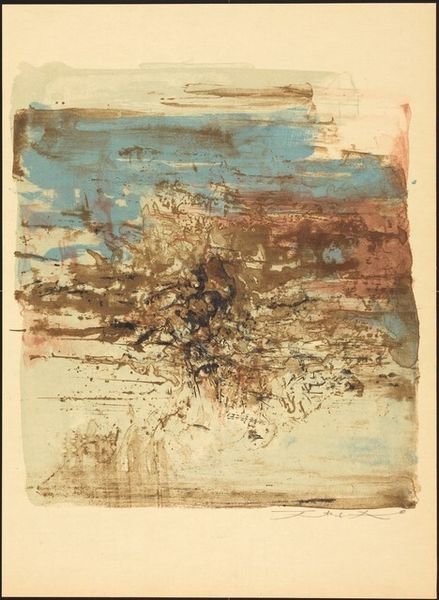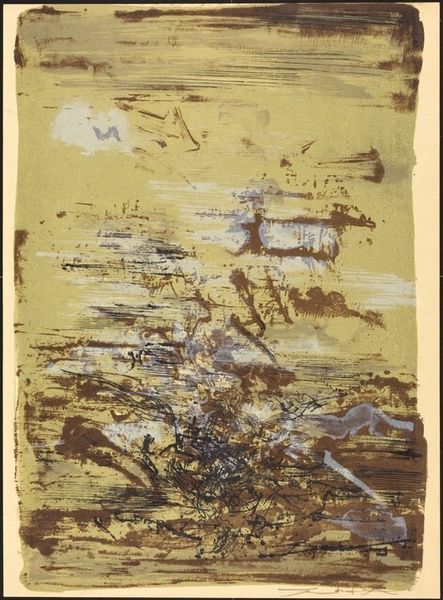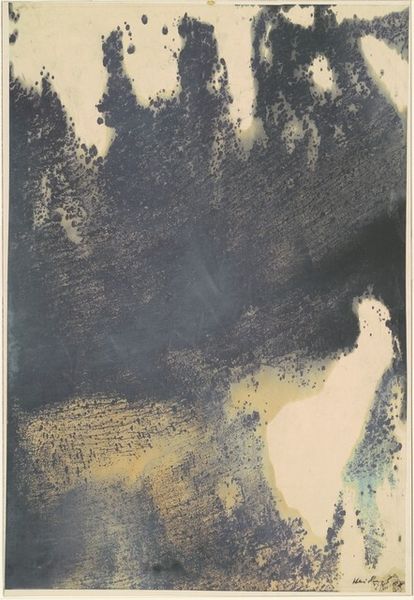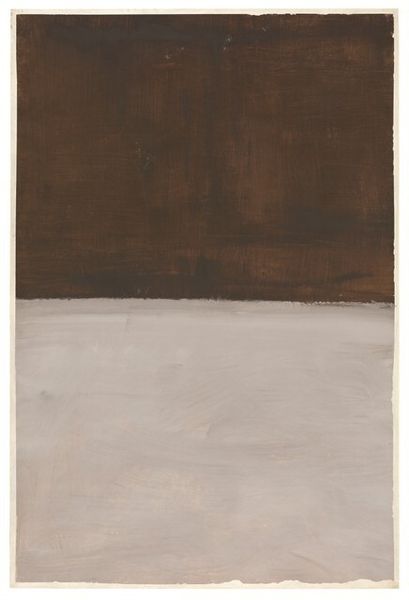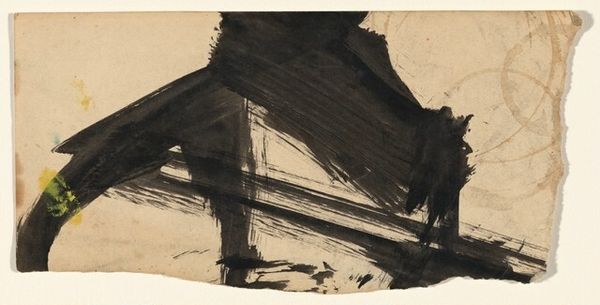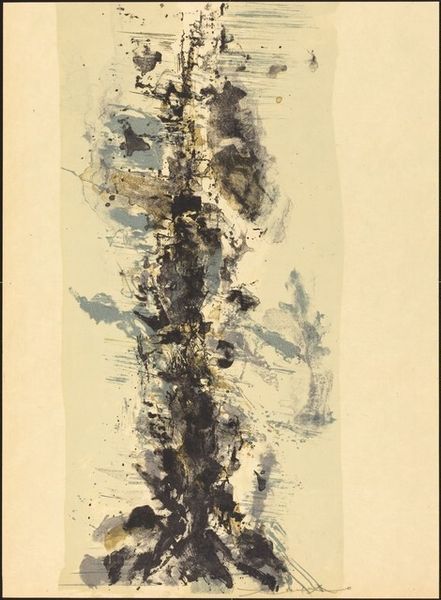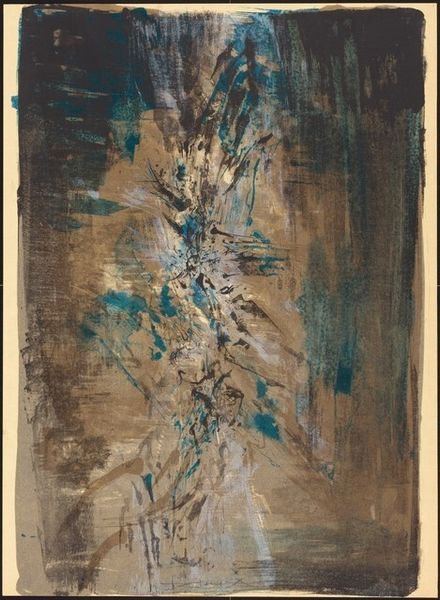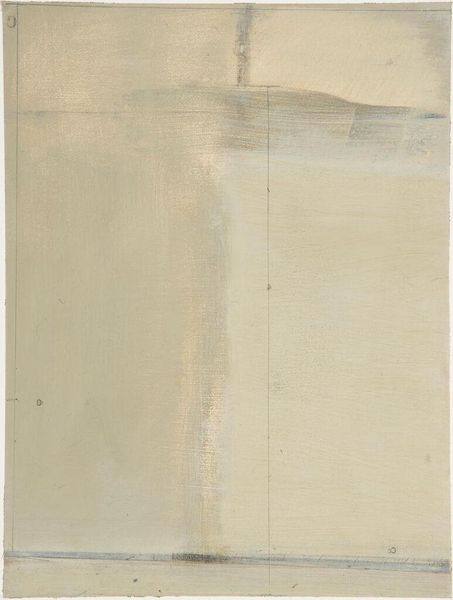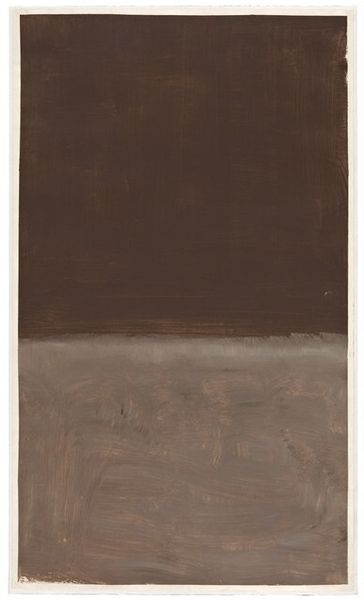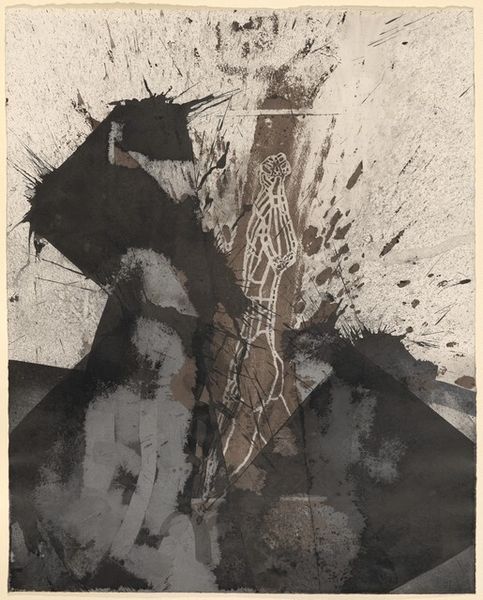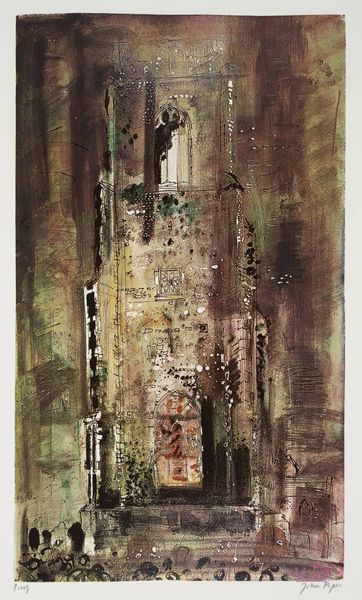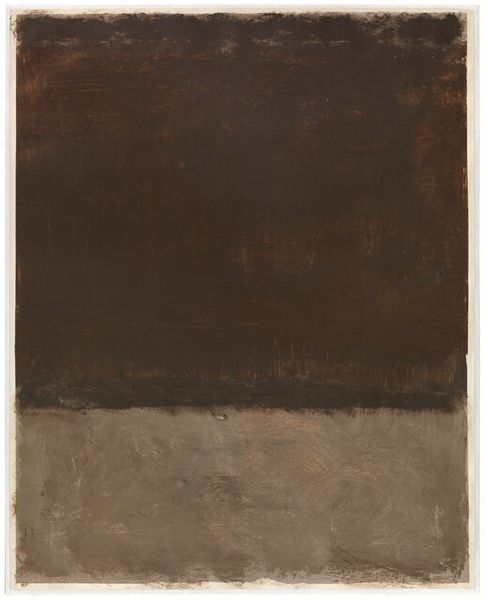
print, gestural-painting, ink
#
abstract-expressionism
#
abstract expressionism
#
ink painting
# print
#
asian-art
#
gestural-painting
#
ink
#
abstraction
Copyright: National Gallery of Art: CC0 1.0
Editor: This artwork is an untitled print, potentially from 1962, by Zao Wou-Ki. It’s mostly brown ink, and the composition is divided horizontally. There’s something almost melancholic about it. What historical contexts help illuminate this abstract piece? Curator: Considering the cultural landscape of the early 1960s, we see Zao Wou-Ki situated between cultures. He’s drawing upon both traditional Chinese ink techniques and the rising tide of Abstract Expressionism in the West. Do you see a connection to calligraphy in the gestural marks? Editor: I can definitely see it now that you point it out – the strokes feel like writing, but I can't decipher anything specific. How did the blending of those influences affect the public’s view on his work? Curator: That fusion was pivotal. In the West, it provided a connection to Eastern philosophy and aesthetics, which were gaining popularity. Back in Asia, it placed him as a modern artist conversant in international artistic languages. But did it perhaps face criticism for not being "authentically" Chinese or fully Western? Editor: That's a valid point. Being in-between might have also presented some difficulties for both audiences! Did the museums and galleries reflect that in-between state somehow? Curator: Exactly. Major institutions initially struggled to categorize him, which affected how his art was promoted and understood. It speaks to the broader issue of how museums frame non-Western art in a Western context. What do you make of his choice to leave it untitled? Editor: Perhaps as a way to resist categorization? Giving it a title would add another layer of interpretation shaped by language and force a Western perspective. Curator: Precisely! He may be asserting artistic independence. So, now when you look at it, what seems most striking to you about the work and how its place within museums may have impacted that perception? Editor: I’m seeing how museums have an active role in shaping cultural appreciation and understanding – that context is everything in shaping the "politics of imagery." It’s fascinating to think about how that applies to this untitled print!
Comments
No comments
Be the first to comment and join the conversation on the ultimate creative platform.
